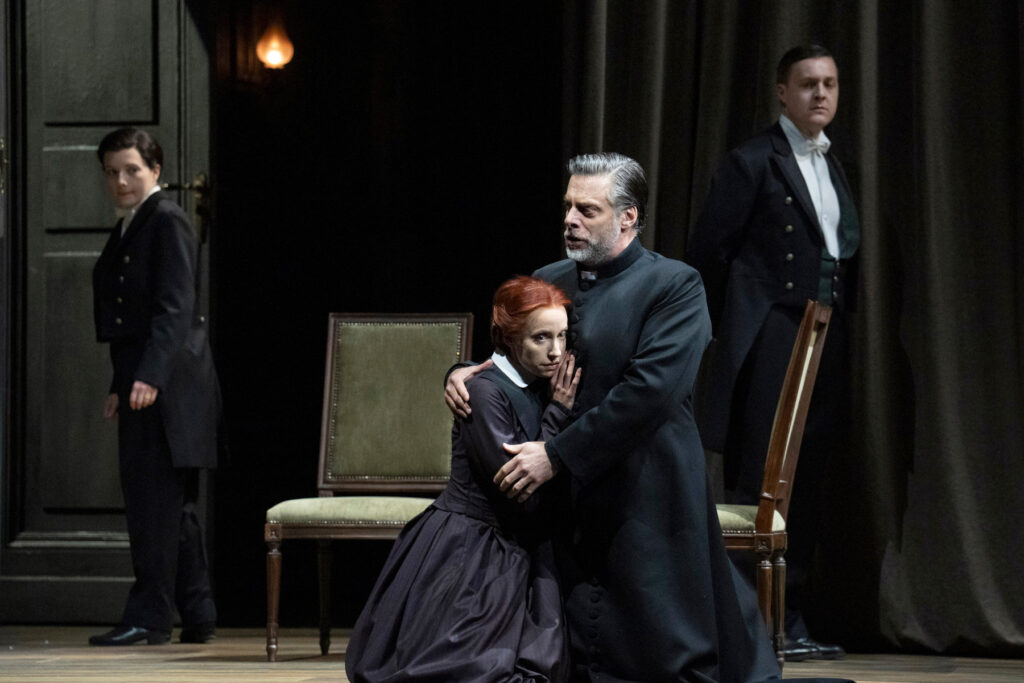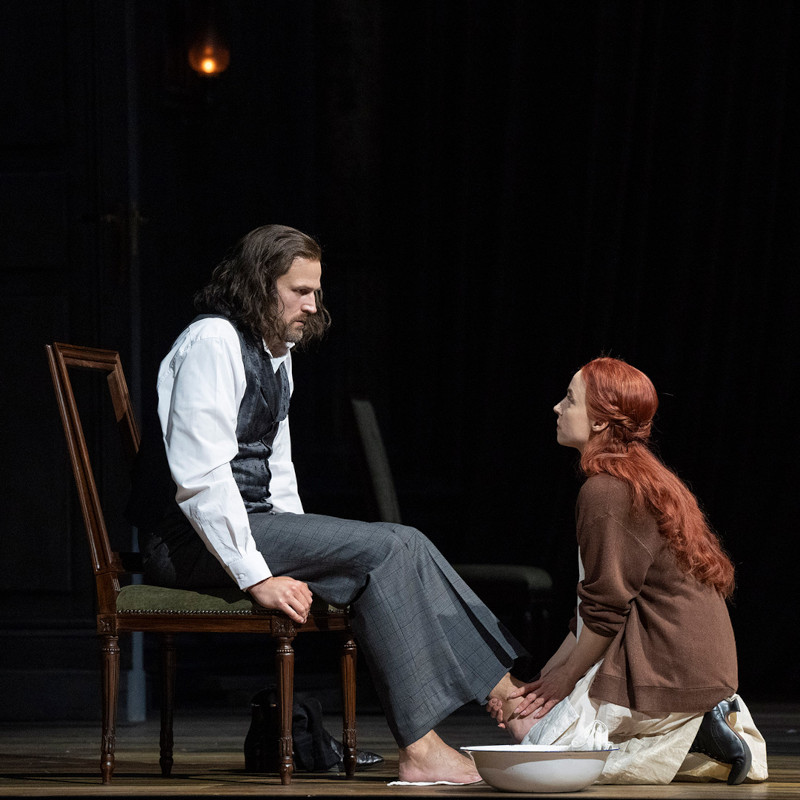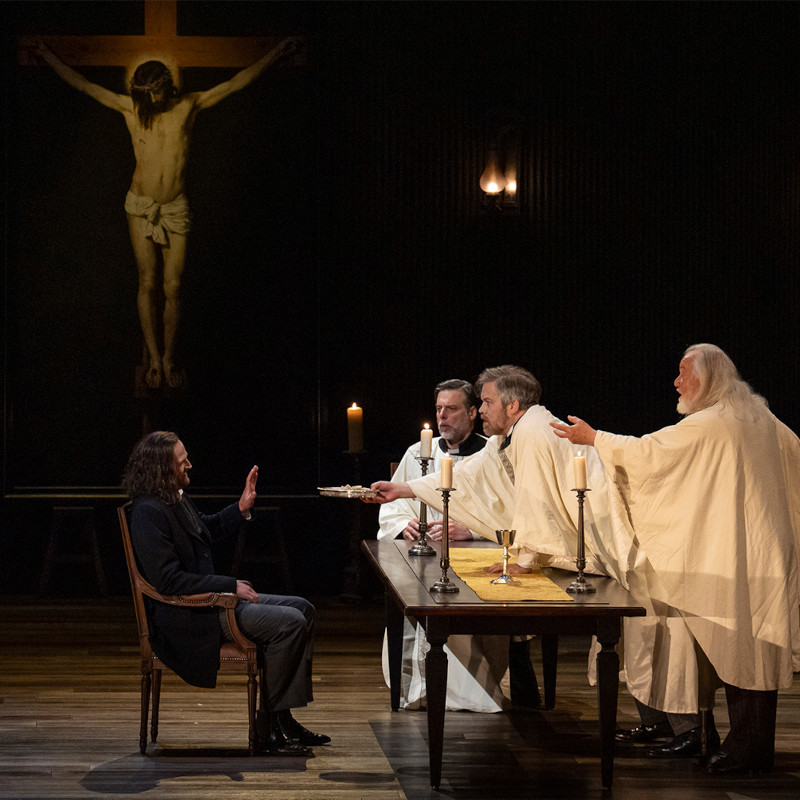Directors have a habit of interfering with composers’ intentions in their efforts to draw out new perspectives. That’s no bad thing when a novel approach creates insightful correspondences with the original conception. But the opening night of Glyndebourne’s first ever presentation of Parsifal, long dreamed-of by founder John Christie, drew a mixed reception, with some audible disapproval at the curtain calls. This was not aimed at the orchestral playing, nor the singing, both of which were world class, but calculated to express reservations about the interpretation from Dutch director Jetske Mijnssen whose first encounter with Wagner this was.

Anyone familiar with the composer’s already enigmatic “sacred play to consecrate a stage” (part mystery play, part opera) might have been puzzled by the biblical reference to Cain and Abel that appeared during the Prelude. Mijnssen makes this clear in the souvenir book (ideally, one needed to read her observations before the performance), when she explains her immersion in the works of Chekhov led her to perceive Wagner’s Arthurian-inspired mysticism as a Victorian family drama, and she sets the staging around the same period as Parsifal’s premiere in 1882. Amfortas and Klingsor are envisaged as siblings and building on the notion of a family at war, she sees Parsifal as the stranger, and innocent fool, in a dysfunctional household in which fraternal rivalry leads to Klingsor’s expulsion from Amfortas’ religious community. Glyndebourne marketed this production to emphasise “Blood, sex, magic and redemption”. What we largely saw by the end of Act 3 was reconciliation: any sense of redemption or even enlightenment defused by directorial intervention.
Mijnssen’s new perspectives include the transformation of Kundry from a promiscuous wild beast to a demure house maid who makes her first entrance as a servant carrying a tea tray. There are also multiple versions of Kundry, Amfortas and Klingsor (presented by actors as adolescents in Act 1 and seniors in Act 3) which, given the family slant, does make sense, as does the presence of Parsifal’s mother, Herzeleide, in Act 2, when Kundry relates how Parsifal broke her heart. It’s a moment of well-conceived heightened drama.

With all the surplus material to unravel, newcomers might not immediately comprehend Parsifal’s sole purpose is to restore the fortunes of the religious order that protects the Holy Grail. He can only do so by bringing the ‘gift of death’ to Amfortas whose grievous wounds inflicted by Klingsor (his estranged brother) must be healed by a touch of the spear that pierced the body of Christ. In this instance, the spear is reduced to the size of a penknife, undermining any sense of mystery or magic.
Otherwise, there was much to admire in Ben Baur’s one-size-fits-all set comprising a huge drawing room of marble columns that was more mansion than castle and clearly needing the decorators by Act 3. A garden of delphiniums is the backdrop for younger versions of Amfortas and Klingsor as they fight over their affections for an equally young Kundry. Elsewhere in Act 1, actors mime the backstory of the devout Gurnemanz – a house chaplain, while the ancient patriarch Titurel (the veteran John Tomlinson) views unfolding events with concern, including the savage beating of Parsifal during the Grail Ritual. Act 2 initially unsettles with the sight of red-headed Flower-Maidens in multiple versions of Kundry (looking distinctly Pre-Raphaelite thanks to Gideon Davey’s designs), who variously scold and tease Parsifal before Kundry herself attempts to seduce the wanderer in what became, for me at least, the evening’s most intensely wrought thirty minutes. Spectacle is provided by Act 3’s deathbed tableau and a magnificent funeral procession, its candle-lit ceremony only lacking wafts of incense which could have enhanced the foot washing episode between Parsifal and Kundry.

The production is blessed with some outstanding singer actors. If Daniel Johansson’s Christ-like Parsifal is a tad uneven vocally, he compels utterly in his great Act 2 confrontation with Kristina Stanek’s Kundry, whose periodically warm mezzo convincingly reaches the extremities of the role’s range. She’s at her most persuasive when interacting with Johansson and Ryan Speedo Green’s darkly sonorous Klingsor. John Relyea brings depth of tone and authority to Gurnemanz, while Audun Iversen’s Amfortas is suitably angst-ridden, neither singer quite matching Tomlinson’s projection or ability to command the stage. The chorus excel as Grail Hall servants and flower maidens, and conductor Robin Ticciati coaxes superbly detailed and supportive playing from the London Philharmonic Orchestra, woodwind especially beguiling. Overall, there are excellent performances, but a production that might ask you to keep an open mind over its directorial interpretation, one not without some fascinating ideas.
David Truslove
Parsifal
Richard Wagner – Bühnenweihfestspiel in three Acts to a libretto by the composer [sung in German with English surtitles]
Cast and production staff:
Parsifal – Daniel Johansson; Kundry – Kristina Stanek; Gurnemanz – John Relyea; Amfortas – Audun Iversen; Klingsor – Ryan Speedo Green; Titurel – John Tomlinson; Glyndebourne Chorus
Director – Jetske Mijnssen; Set Designer – Ben Baur; Costumes – Gideon Davey; Choreographer – Dustin Klein; Lighting – Fabrice Kebour; Conductor – Robin Ticciati. London Philharmonic Orchestra.
Glyndebourne, 17 May 2025
Top image: Parsifal (Daniel Johansson) and Kundry (Kristina Stanek)
All photos © Glyndebourne Productions Ltd. Photo: Richard Hubert Smith